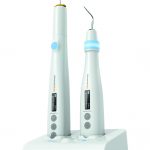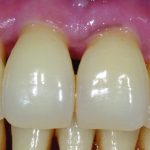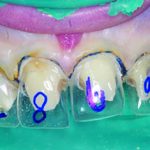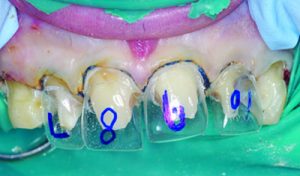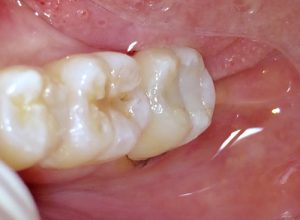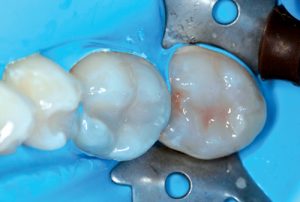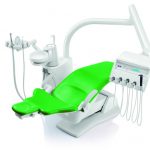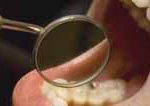Kerr Dental explains the benefits of simplifying your posterior restorations from apex to crown with a special focus on the benefits of warm vertical obturation.
On completing this CPD article, the reader will:
- Understand the steps to simplifying posterior restorations from apex to crown
- Understand why warm vertical obturation offers the gold standard in endodontics for the prevention and/or the elimination of apical periodontitis
- Recognise how the elements™ free obturation system can deliver benefits to the clinical team and patients.
Simplifying posterior restorations
Following a consistent procedure from root canal to final restoration offers advantages in terms of predictability of results and peace of mind as well as helping you to feel in complete control. Here we suggest some top tips for simplifying each stage of the procedure to help you identify the solutions needed for your practice:
Stage 1 – Field preparation
Top tip: Apply a 3D anatomical dam that gives you great visibility and protects your patient effectively.
Stage 2 – Canal shaping
Top tip: Use a file system that adapts its movement to the clinical conditions encountered, so you have better control, fewer risks of file breakage and less hand fatigue.
Stage 3 – Canal cleaning and disinfection
Top tip: Apical negative pressure applied through a handheld device allows you to irrigate the whole canal, including the apical third, with minimised risks of extrusions.
Stage 4 – Obturation
Top tip: Obturating with the continuous wave of condensation technique allows you to simply and safely fill the canal all the way to the apex.
Stage 5 – Creation of contact points
Top tip: An all-in-one matrix system is what you need to create accurate contact points without using a matrix retainer.
Stage 6 – Bonding
Top tip: With an all-in-one bonding agent you will achieve a strong and imperceptible adhesive layer with a simplified protocol.
Stage 7 – Core Build-Up
Top tip: Build up the abutment with a bulk fill composite that reacts to sonic energy, done in one increment with exceptional adaptability and marginal integrity.
Stage 8 – Final polymerisation
Top tip: Polymerise deeply with a cordless curing light that provides uniform depth of cure while protecting patients from the heat.
Stage 9 – Crown preparation and cementation
Top tip: When cementing, pay attention to the clean-up phase. A Colour Cleanup Indicator helps you to identify the best moment to remove excesses safely and without stress.
Stage 10 – Finishing
Top tip: When perfecting the surface and the margins, use a disc system that can access restricted areas with great ease and give you better visibility.
Stage 11 – High gloss polishing
Top tip: Finish off using a high gloss polisher with pre-embedded abrasive particles, for a great result without the need for paste.
Experience start to finish posterior procedure, from apex to crown. Find out more at kerrdental.com/simplify
Gold standard in obturation
As dental professionals are all too aware, effective obturation of the root canal system is one of the keys to endodontic success. Only when this is achieved can the clinician and patient rest assured that microorganisms will be prevented from re-entering the root canal system, and that any microorganisms that may remain within the tooth from nutrients in tissue fluids will remain isolated1.
For the dentist, warm vertical obturation, as recommended by endodontists, offers the gold standard in root canal treatment. This is partly due to the fact that it facilitates a three-dimensional seal of the root canal by filling all voids, and pushing sealer into lateral canals and tubules, which reduces the risk of reinfection.
As Bey (2015) wrote so succinctly, ‘The main objective of endodontic treatment is the prevention and/or the elimination of apical periodontitis. This is achieved by instrumentation, disinfection, and obturation of the root-canal system in three dimensions. Gutta-percha is the most widely used and accepted obturation material because of its biocompatibility, inertness, dimensional stability, compactability, plasticity when heated, and ease of removal for post placement or retreatment. There are a variety of techniques that are used to obturate the root-canal system. They can be divided into two basic groups: cold lateral compaction and warm vertical compaction:
- Cold lateral compaction of gutta-percha by compacting them laterally against the sides of the canal walls with spreaders
- Warm vertical compaction of gutta-percha using the continuous wave of condensation technique is less time consuming, provides less microbial coronal leakage, and adapts better to grooves and depressions of the canal walls and lateral canals than cold lateral compaction.’2
Glassman (2012) also examined the significance of three-dimensional obturation of the root canal system. Alongside biomechanical preparation and chemotherapeutic sterilisation he consider this to be ‘[…] the hallmark of endodontic success’.3
Simplifying warm vertical obturation with elements™free
The cordless elementsfree system can help to achieve endodontic success. Like the Elements Obturation Unit, it has a downpack unit, which can be used in conjunction with any gutta-percha. Using an exact fit gutta-percha point to the corresponding file system that the dentist finished on, the downpack heats that gutta-percha point and compacts it into the apical third of the canal.
Again like the Elements Obturation Unit, elementsfree has an extruder handpiece that accommodates disposable preloaded cartridges of gutta-percha of varying densities and is used to backfill the root canal space. They are available in medium body and heavy body viscosities. The applicator tips are available in 23 gauge and 25 gauge diameters. There is enough gutta-percha in the disposable cartridges to fill an average molar, approximately four canals.3
The GP cartridge applicator tip is placed into the root canal space until it penetrates the apical plug of gutta-percha for five seconds to re-thermo-soften its most coronal extent. This promotes cohesion between each segment of warm gutta-percha.3
Segments of 5mm to 6mm of gutta-percha are then deposited. Injecting or dispensing too much gutta-percha invites shrinkage and/or voids, which result in poorly obturated canals. As gutta-percha is extruded from the applicator tip, the viscosity gradient of the back pressure produced will push the tip coronally from the root canal space.3
The technique sensitivity requires that when this sensation occurs, the operator must sustain pressure on the trigger mechanism as the applicator tip moves from the canal. The Buchanan pluggers are then used in sequence to maximise the density and homogeneity of the compressed gutta-percha mass. This sequence of thermo-softened gutta-percha injection and progressive compaction is continued until the obturation of the entire root canal space is achieved.3
The elementsfree system offers both downpack and backfill capabilities and can be used with any file system; just use the exact-fit master cone to the corresponding file system.
(sub) Patient benefits
As elucidated by Dr Herb Schilder in his seminal 1967 article ‘Filling Root Canals in Three Dimensions’, ‘Vertical condensation of warm gutta percha produces consistently dense, dimensionally stable, three-dimensional root canal fillings.’4
Supporting this conclusion and demonstrating the benefits of the elements™ free system, Bey (2015) described a case report using the cordless obturation unit for the retreatment of a three-rooted maxillary first bicuspid.2
A complicated case, this clearly had the potential to cause the patient added upset if treatment was not performed to a consistent standard – something that the patient seemingly hadn’t previously experienced, since this was a retreatment case and the initial examination revealed that while
the mesiobuccal and palatal canals appeared to have been adequately filled, the distobuccal canal was filled short.2
Bey (2015) went on to conclude, ‘In this case obturation was accomplished using the cordless elementsfree obturation system. The cordless feature allows freedom of movement during treatment. The omnidirectional activation ring on the downpack unit is easily depressed, independent of the position of the plugger in the canal. The swivel movement of the needle tips, and the extrusion action of the Backfill device makes delivery of gutta percha efficient, easy and precise, leaving no voids in the final outcome.’2
This, of course, means that, when the dentist is armed with the right tools, patients can be provided with a consistent level of treatment, reducing the likelihood of retreatment.
(sub) Benefits for the clinical team
The elementsfree system makes life easier for the team being ergonomic, intuitive, easy to store and maintain. As a cordless emulation of the Elements Obturation Unit, it uses the same Continuous Wave downpack tips, the same backfilling cartridges, while offering the same level of performance.
Thus, for downpacking, System B Heat Pluggers can be used, achieving the same great performance and eliminating the need to become familiar with other pluggers, while the 360° activation ring helps to improve the team’s treatment experience. Furthermore, the control button toggles through the presets easily (preset at 200°C for gutta-percha, 150°C for synthetic). The control button can also be used to customise the temperature, between 140°C and 400°C, again offering outstanding ease of use.
In addition, when it comes to backfilling, Elements Obturation Unit cartridges are used. In the past, the cartridges required a wrench to insert and remove them from the extruder handpiece. However, the cartridges now have ‘wings’ and can be easily inserted and removed with your fingers. These disposable cartridges minimise the risk of cross contamination and eliminate tedious, time-consuming clean-up. Made of silver for excellent heat conductivity, they load and disengage easily, offering a real benefit for the whole dental team.
Operator comfort has not been forgotten; high‐performance insulation around heater (Silica Aerogel) ensures the outer plastic housing stays cool whilst the inside mechanism is hot, heating the gutta-purcha.
(box) A true winner
elementsfree is the recipient of The Dental Adviser’s much sought after Editors’ Choice Award.5
Nine consultants evaluated the system, with an average of 17 uses per consultant. It received a 96% clinical rating. Some of the consultants involved in the decision-making process had this to say about the system:5
- ‘It is light, cordless and does exactly what you want it to.’
- ‘Love this system, and it is even greater in that it is lighter and cordless.’
- ‘Portable, lightweight, and heats quickly. I also like the one-touch activation/deactivation ring.”
- ‘Warming tip is convenient.’
- ‘Produces great fills.’
Expanding the horizons of endodontic success
As Glassman (2012) stated so succinctly: ‘With each improvement and modification of the
technical limitations of the technique, the thermo-softened millennium will continue to expand
the horizons of endodontic success and elevate the standard of care and pursuit of excellence in
clinical treatment materials.3
References
- Carrotte P. Endodontics: Part 8 – Filling the root canal system. BDJ 2004; 197: 667-672
- Bey G. A Complicated Endodontic Retreatment Using A New Cordless Obturation System:
A Case Report. Oral Health 2015; May: 16-26
- Glassman G. Three Dimensional Obturation of the Root Canal System: Continuous Wave of Condensation. Roots 2012; 3: 20-26
- Schilder H. Filling Root Canals in Three Dimensions. Dent Clin North Am. 1967; Nov: 723-44
- https://www.dentaladvisor.com/evaluations/elements-free-obturation-system-2017-product-award/. Accessed 14 February 2017
To complete this article and gain one hour of verifiable CPD, https://the-probe.co.uk/courses/course_category/brush-up





